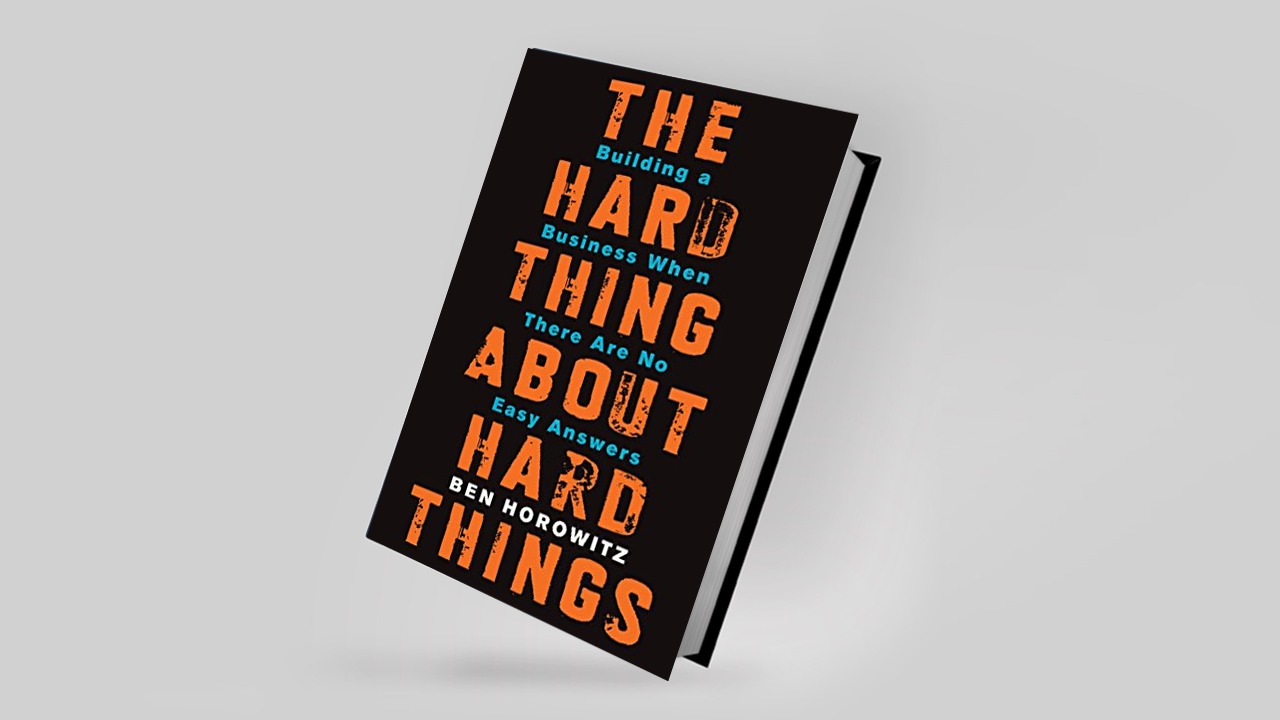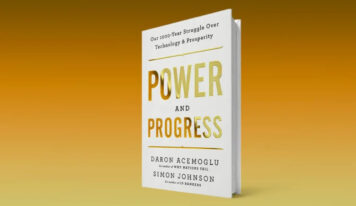How to build a business when there are no ready answers
Core Ideas:
– Firing all the hand-picked employees, losing the investors who trusted the venture, damaging all the customers is a drama to be avoided at all costs. Here’s a tough side to face.
– When we build a business, we must believe that there is a solution, even if the chance of finding one is small. It matters little whether the probability is 90% or one in a thousand, the task is the same.
– If the warrior keeps death in mind at all times and lives each day as if it were his last, he will behave with dignity in all his actions. In the company, this warrior is the leader of his business area.
– You can’t do everything by yourself. You will not be able to share all the burdens, but share those that you can. Gather as many brains as possible around the problems.
– Between people, products and profits, the first place goes to people. If your company is a good place to work, chances are it will last long enough for you to achieve success.
About the author:
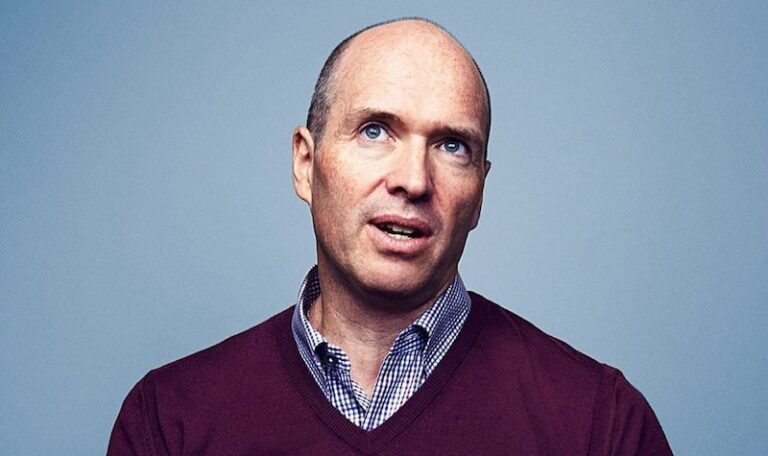
Ben Horowitz is an American entrepreneur, a prestigious investor in Silicon Valley. As a blogger, he has published his investment experiences that formed the basis for this book. As a technology entrepreneur, he is co-founder of the venture capital firm Andreessen Horowitz. Even in The Hard Side, there is room for humor captured in hip-hop and rap songs.
Introduction
“The hard part is not setting a lofty, complicated, audacious goal, it’s firing people when it’s not achieved,” is how Ben Horowitz explains the motivation, the why of the aforementioned work. He continues: “The hard thing isn’t to put together the organizational chart you’ve devised, it’s to get people to communicate within it. The hard part is not dreaming big, it’s waking up in a cold sweat in the middle of the night when the dream turns into a nightmare.
Many books, the author points out, try to give a ready-made recipe for challenges for which there is no recipe.
For there are no ready-made recipes for facing dynamic and complex situations. “That’s the difficult side of difficult situations: there are no formulas for dealing with them,” Horowitz concludes.
In this book, he does not, therefore, intend to present a formula. He tells his story, the difficulties he faced as an entrepreneur, CEO, and venture capitalist. The lessons he has drawn from these endeavors he has put them into blog posts, now interwoven, enriched into a book format for a wider audience.
Fear and challenges
Ben Horowitz had to face difficult situations already in his childhood. On one occasion, a friend of his brother, a boy by the name of Roger, ordered Horowitz to go and face a boy who was parading his stroller, shouting at him the pejorative of nigger (nigger). Horowitz had no choice but to face the older Roger. He gathered his strength and went to meet the boy with the toy. But he changed the words, saying, “May I ride in your cart?” The boy responded immediately, and Roger was gone, perhaps with clearer, less aggressive ideas. Conclusion of the episode. Ben and Joel Clark rode the trolley all day long. They became lifelong friends and Joel was best man at the author’s wedding.
For him, the lesson remained: “I had never told anyone this story, but it gave direction to my life. It taught me that even if I was afraid, I could create courage. My actions mattered and could determine whether I would become a hero or a coward.

Netscape
After experiences at Silicon Graphics and NetLabs, Horowitz tried his luck at Netscape. Netscape became notable for the creation of a browser. He talks about this adventure: “It was only in the middle of the planning process that they (the founders) concluded that if they improved the browser, made it more secure, more functional, and easier to use, they could make the Internet the network of the future. And they set Netscape that mission – a mission accomplished with glory.
However, there have been bumps in the road. Microsoft announced that its browser, Internet Explorer, would go free in the operating package, Windows 95. Microsoft went further, releasing the Internet Information Server (IIS), which was five times faster than Netscape’s.
“We had five months to solve the problem before Microsoft released IIS, otherwise we would have been burned.”
He, who was head of products for the Enterprise Web Server line, and Mike Homer spent two months developing a response to Microsoft. They put together a package called Netscape SuiteSpot, which would take down Microsoft’s BackOffice. The success of this package preserved Horowitz’s job at Netscape. Not only did he not get fired, SuiteSpot came from nothing and became a $400 million-a-year business. From then on, Marc Andreessen and Horowitz became not only friends, but also business partners for many years.
At the end of 1998, under great pressure from Microsoft, which was using the full force of its monopoly over operating systems, Netscape was sold to America Online (AOL). This seemed, at first glance, to be a victory for Microsoft. In the long run, Netscape inflicted defeat on Microsft’s suffocating dominance within the browser industry. Netscape was not immune to the demise of AOL, but developed many technologies that serve as the foundation of the modern Internet, including JavaScript, SSL, and cookies.
Technology First
Over time, Horowitz and other Netscape directors came to the conclusion that AOL was more of a media company than a technology company. “Media companies are concerned with creating narratives, while technology companies seek to develop better ways of doing things,” says our author. The hard side again should be overcome. Certainly, but as innovation. That’s the lesson of Horowitz. A difficulty arose, demanding a solution. The company In Sik complained that every time it tried to connect to an AOL partner, on its e-commerce platform, the site crashed because it was unable to handle the intensity of traffic.
Media companies are concerned with creating narratives, while technology companies seek to develop better ways of doing things
Elaborating on the idea, Horowitz and his group studied the problem and came up with the concept of cloud computing. In fact, the term “cloud” was already used in the telecommunications industry to refer to the intelligent cloud that controls the complex processes of order routing, billing, and the like.
Loudcloud and the cloud
“We thought the same concept was needed in computing so that software developers didn’t have to worry about issues of security, scale, and data recovery,” Horowitz explains. To this end, a new company was created, named Loudcloud. Once registered, Horowitz and partners went after the money. It was 1999. The sale of shares was completed with contributions from the bank Morgan Stanley. Loudcloud built the cloud infrastructure in record time and soon began to attract customers. Within seven months, it amassed $10 million in contracts.
“It felt like we were building the biggest deal ever.” It was then that the big dotcom crash happened. The Nasdaq peaked at 5,048.62 points on March 10, 2000 – more than double its value the previous year – and fell 10 percent ten days later. The headlines announced “total burnout.” Startups lost value. Dotcoms went bankrupt overnight. The bad thing about the whole story is that Loudcloud needed to raise more money in a nefarious atmosphere.
“Back then I learned the most important rule for raising money from private investors: look for a one-person market. All it takes is for a single investor to say yes,” Horowitz recalls. There was a good round of investment. It was good to go.
But the dotcom implosion turned out to be much more damaging than had been imagined. The money saved had been spent on cloud infrastructure.
Loudcloud, in six months, had gone from being the most promising startup to a company nobody wanted to invest in. And the outlook was not encouraging. Firing all the hand-picked employees, losing all the customers who had trusted the venture, damaging all the customers was a drama that had to be avoided.
Faced with this, Horowitz and partners decided to go public. It was the crack open, as private investors no longer believed in the company. At this point, Horowitz consulted a friend and trusted person: Bill Campbell, a member of the company’s board. He opted for going public. The market did not react well to this IPO; the specialized press made comments and did not recommend the investment.
In the end, after much back and forth, the IPO went through, even with bad prognoses and hostile comments. The company managed to raise US$ 162 million, but there was no celebration. The atmosphere was not the happiest.
Customers kept abandoning ship, the macroeconomic environment worsened, sales prospects diminished. It was necessary to redefine the projected revenue. With difficulty, the results were coming in, but, in the meantime, September 11th came, with the attack on the World Trade Center towers and the Pentagon. It was necessary to think of a plan B.
The mood was down: “We are going bankrupt, I will lose everybody’s money, including my mother’s, I will have to fire people who have worked hard in a terrible economic environment, all the customers who trusted me will be screwed, and my reputation will be ruined,” Horowitz lamented.

Opsware, the turn of software
However, this whole scenario called for efforts towards a solution. A light appeared at the end of the tunnel: the company would buy Opsware, a software that ran on Loudcloud. With this a software company would be opened. How to move from the cloud to the software business?
At this point, Horowitz consulted John O’Farrell, Loudcloud’s director of development, whom he considered to be his brother, the Irish brother. John and Horowitz began mapping the market to find interested parties to buy the company. Three likely buyers were found, IBM, Cable & Wireless, and EDS. EDS turned out to be the buyer. “It would buy Loudcloud for $63, 5 million dollars in cash and assume its liabilities. We would retain the intellectual property and Opsware and become a software company,” recounts Horowitz.
It seemed at one moment that all the problems had been solved. But no. A new stage of solutions was to begin. The new company needed to put together a product. Opsware had been created to run only on Loudcloud. It was not ready to take on the world. Opsware had not achieved its goals and several technical problems arose. As a result, EDS wanted to cancel the deployment, cancel the contract, and demand their money back. Even more: it gave sixty days to solve the impasse.
The days were running out. A solution was needed. It came in the purchase of a company called Tangram that had a product to do the annual balance of hardware and software. The business formula was to offer the Tangram product for free along with Opsware software. Opsware set out to buy Tangram. “We had done it. We saved the (EDS) account and the company,” Horowitz says.
In the interim, after battles won, came a new front of struggle, of innovation. A technology called “virtualization” was taking the market by storm and changing the way customers thought about automating their network environments. The substantive changes in software architecture were making Opsware’s position in the market vulnerable.
There were those who would admit to one more challenge, after many won. But the price was high. Was it worth it?
The company’s stock was soaring. Wasn’t it time to pass the ball forward? Many companies showed interest in buying Opsware and Hewlett-Packard hit the hammer at 1.65 billion dollars. For Horowitz, not bad, it was a sum that had come practically from nothing.
In business planning, as in other areas, there is talk of plan B. “Throughout the seemingly impossible processes that Loudcloud had faced – the third round of financing and the initial offering – I had learned an important lesson: the CEO of a startup should not rely on probabilities,” says the author. According to him, when we build a company, we must believe that a solution exists, even if the chance of finding it is small. It doesn’t matter whether the probability is 90% or one in a thousand; the task is the same.
Executive director, a warrior
Many people ask Horowitz: what is the secret of a successful CEO. For him, there is no secret. However, if there is one skill that distinguishes an adult person from a child, it is the ability of the adult to concentrate and make the best possible decision when there is no good decision in sight to be made. In difficult situations, Horowitz resorts to a principle of Bushidô, the way of the warrior.
If the warrior keeps death in mind at all times and lives each day as if it were his last, he will conduct himself accordingly in all his actions.
Turning to the business side: if the CEO keeps in mind the lessons presented in this book, he will be able to maintain the most appropriate focus in hiring and training employees and in the various acts of management.

Every entrepreneur starts a company in order to achieve success. He thinks about creating a good environment and hiring the smartest people. It’s going to be a party. Everyone will build a beautiful product that will satisfy customers and make the world a better place. But after working day and night to turn ideas into reality, you find that your company has not developed as planned, and employees are losing confidence. Dreams are turning into nightmares. So where does that leave you?
Thoughts:
“The struggle is that moment when you no longer believe you should be the CEO of your company. It is that moment when you are swimming in very deep water, but at the same time you know that no one can replace you.”
“The struggle is that moment when everyone thinks you are an idiot, but no one fires you.”
“Struggle is that moment when you go on vacation to feel better, but end up feeling worse.”
“Struggle is the territory of unfulfilled promises and shattered dreams. It’s the cold sweat, a burning sensation so strong in your stomach that you get the feeling you’re going to spit up blood.”
“Most people are not strong enough, but it is from struggle that greatness is born.”
While he doesn’t present any ready-made solutions, he does offer some tips:
– Don’t carry it all by yourself. You won’t be able to share all the burdens, but share the ones you can. Gather as many brains as possible around the problems.
– We are not playing checkers, we are playing chess. Technology companies tend to be extremely complex. The technology itself changes, the competition changes, and so do the market and people. As a result, like the three-dimensional chess in Star Trek, there is always one more move possible.
– If you play long enough, you might get lucky. In the game of technology, tomorrow is very different from today. If you can survive until tomorrow, the new day may bring the solution that seems impossible today.
– Don’t take anything personally. The terrible situation you got yourself into probably happened through no fault of your own. It was you who hired the employees, who made the decisions. But evaluating yourself and giving yourself a zero grade doesn’t help at all.
The CEO often thinks that it is only up to him to worry about the company’s problems and nobody else. However, if he thought more clearly, he would have realized that the idea of him being the only one to worry about the fact that a product has a defect would make no sense. It would be much more plausible to transfer the problem to the people who are not only capable of solving it, but also motivated to do so.

Don’t hide the truth
For Horowitz, there are strong reasons not to cover up the truth or hide bad news. He gives three reasons for this attitude or culture:
1- Without trust, there is no communication. In any human interaction, the amount of communication required is inversely proportional to the level of trust. As the company grows, communication will become its biggest challenge. If employees trust the CEO, communication will be more efficient than if they don’t. Over time, the ability of the CEO to build this trust can represent the difference between companies that perform efficiently and those that are not.
2- The more brains work together to solve a problem, the better. It is a big mistake and waste to have a large number of brains on the team and not let them work to solve the most serious problems.
3- A good company culture is like the old RIP routing protocol: bad news travels, good news travels slowly. A company that discusses its problems freely and openly is able to solve them more quickly.
Taking care of people is by far the hardest of the three tasks [people, products, and profits], and if we don’t do that, the other two will matter little.
Horowitz likes to refer to a quote from a former boss of his, Jim Barksdale: “We take care of people, products, and profits-in that order.” It’s a simple but profound phrase, the book’s author acknowledges. Taking care of people is by far the most difficult of the three tasks, and if we don’t do that, the other two will matter little. “Taking care of people means making the company a good place to work.
Work environments are, for the most part, lousy. As organizations grow, important contributions are forgotten and unrecognized, hard-working employees are passed over for more political ones, and bureaucratic processes stifle creativity and extinguish the joy of working.
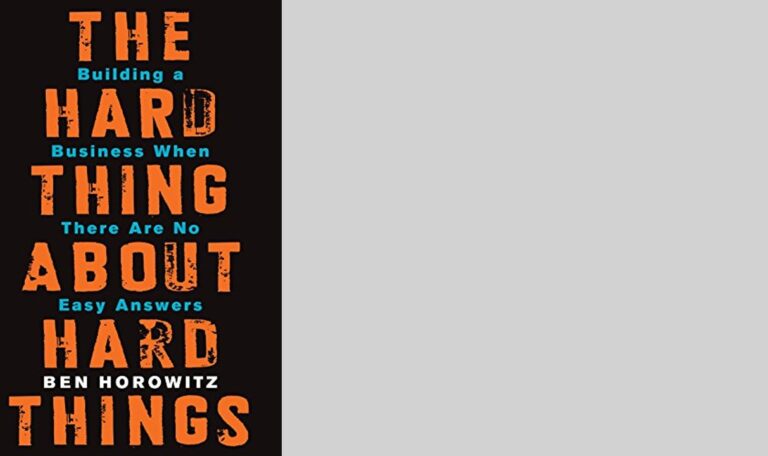
Text: Rogério H. Jönck
Images: Unsplash and Reproduction
Original Title: The Hard Thing About Hard Things
Author: Ben Horowitz
First edition: 2015
![[Experience Club] US [Experience Club] US](https://experienceclubus.com/wp-content/uploads/2021/03/laksdh.png)









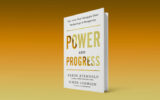
![[Experience Club] US [Experience Club] US](https://experienceclubus.com/wp-content/uploads/2021/03/logos_EXP_US-3.png)


